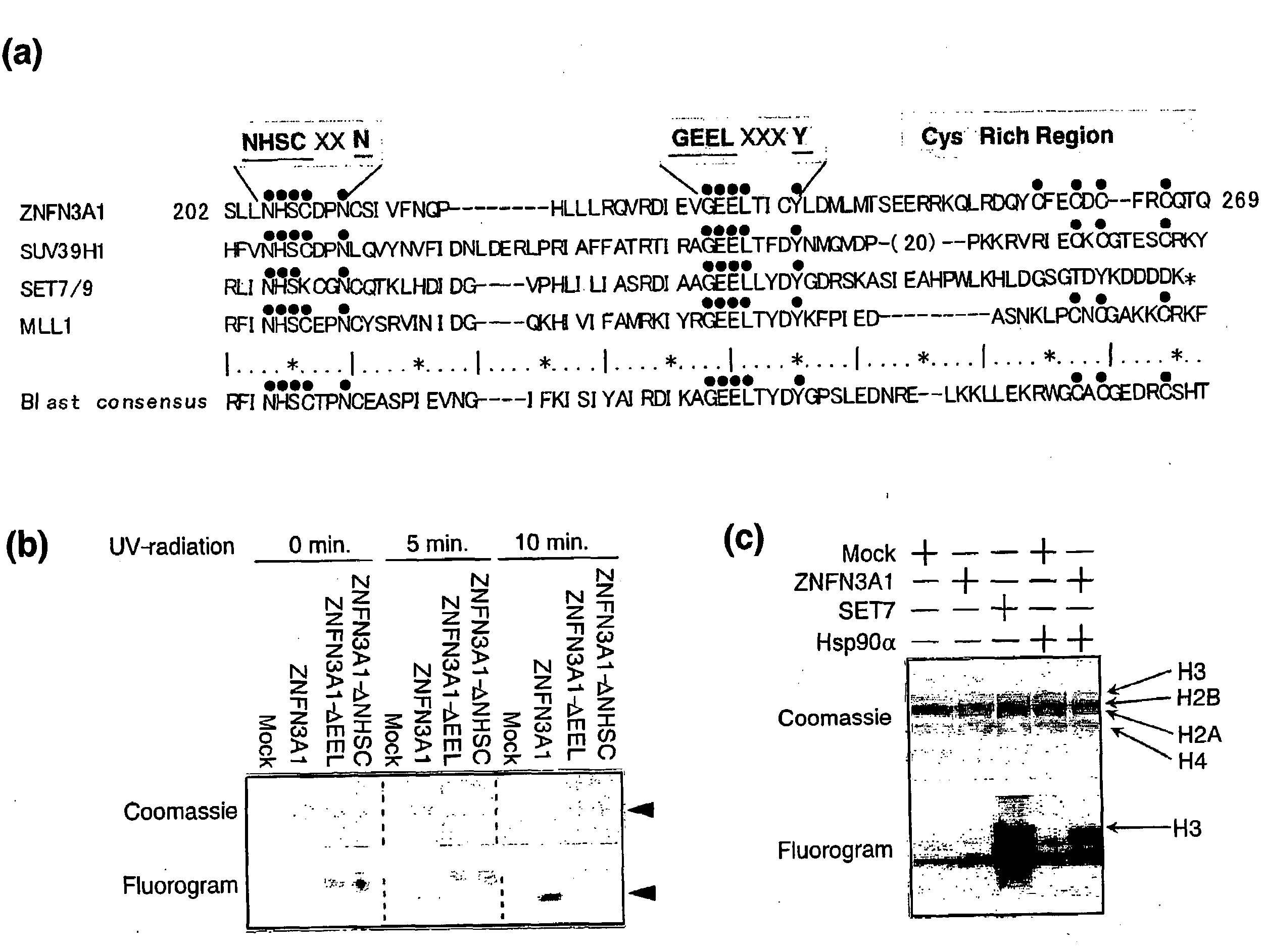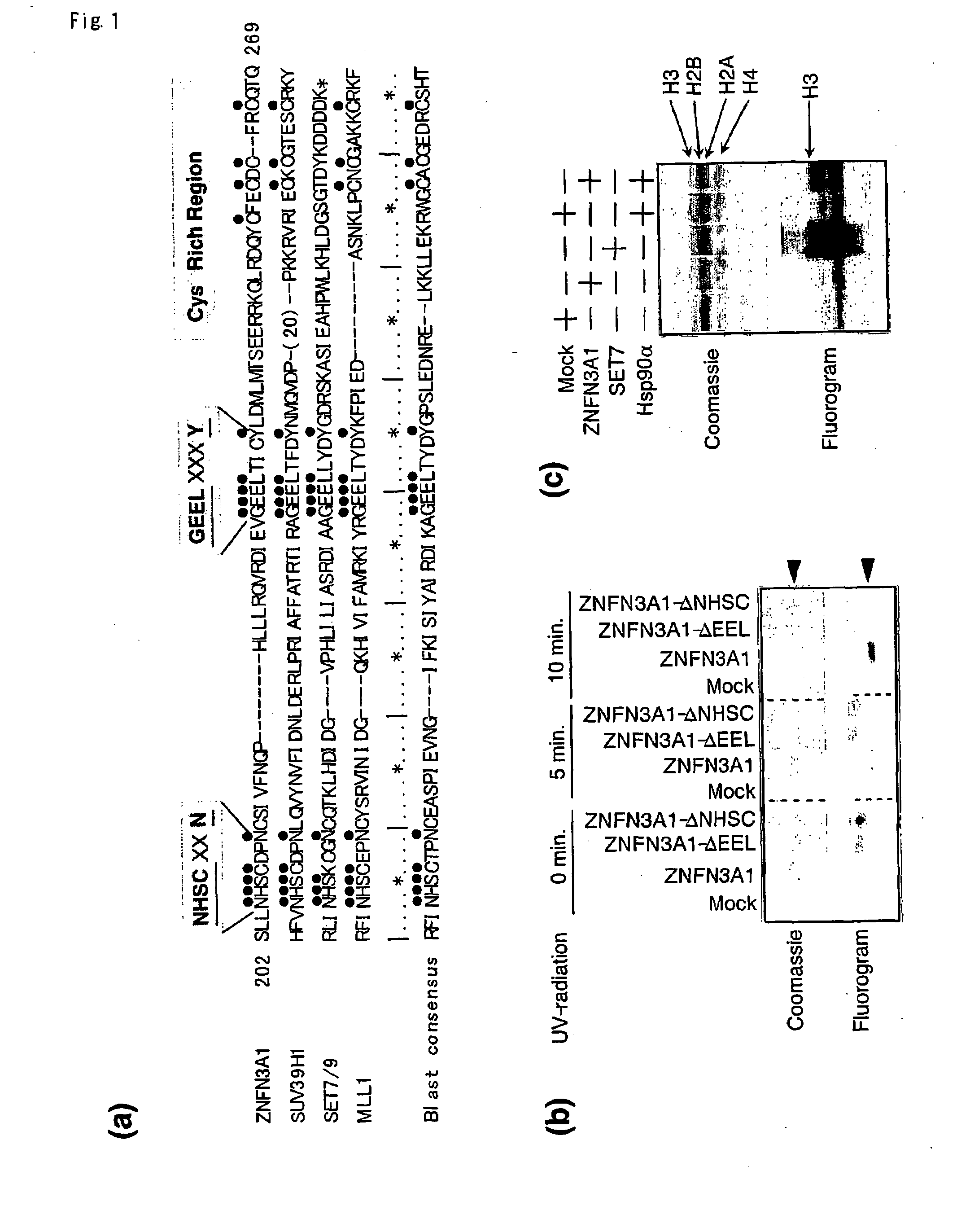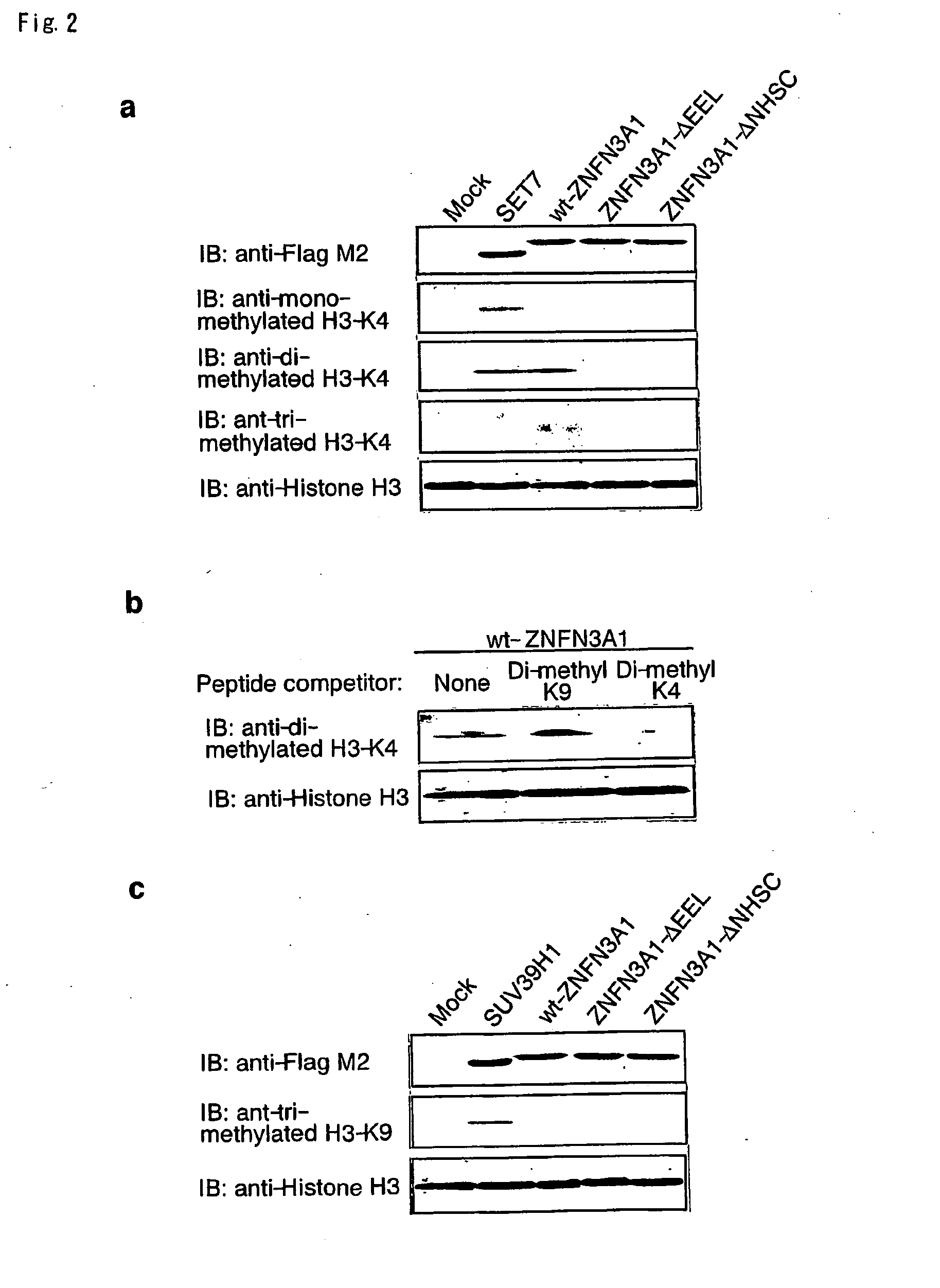Methods of detecting methyl transferase activity and methods of screening for methyl transferase activity modulators
a technology of methyl transferase activity and detection method, applied in the field of transcriptional regulation, can solve the problems of colorectal carcinoma being a leading cause of cancer death in developed countries, difficult to cure the disease completely, and high risk of hccs, so as to achieve the effect of reducing symptoms
- Summary
- Abstract
- Description
- Claims
- Application Information
AI Technical Summary
Benefits of technology
Problems solved by technology
Method used
Image
Examples
example 1
General Methods
In Vitro Histone Methyl Transferase (HMTase) Assay.
[0118]293T cells were transfected with plasmid expressing Flag-tagged ZNFN3A1 (pFLAG-CMV-ZNFN3A1), SET7 protein or mock, and purified tagged proteins by immunoprecipitation with anti-Flag antibody. In vitro HMTase assay was performed according to the protocol (1) with a slight modification. Briefly, immunoprecipitated protein was incubated with 25 μg of free histones (mixture of H3, H2B, H2A and H4; Roche) as substrates and 2.5 μCi S-adenosyl-L-[methyl-3H] methionine as methyl donor in a mixture of 40 μl of methylase activity buffer (50 mM Tris-HCl pH 8.5, 20 mM KCl, 10 mM MgCl2, 10 mM β-mercaptoethanol, 250 mM sucrose), for 60 min at 37° C. For the measurement of histone H3 methyltransferase activity, immunoprecipitated protein was incubated with 1 μg of recombinant histone H3 protein (Upstate) as substrates and 2 μCi S-adenosyl-L-[methyl-3H] methionine (SAM) (Amersham Biosciences) as methyl donor in a mixture of 20 ...
example 2
Determination of Methyl Transferase Activity of ZNFN3A1
[0128]Proteins containing the wild-type SET domain of ZNFN3A1 and two forms of mutant protein that lacked one of the two regions were prepared, and cross-linked equal amount of each protein with [3H]-labeled SAM by exposure to UV-radiation. As shown in FIG. 1b, the wild-type SET domain was capable of interacting with [3H]-labeled SAM and that neither of the mutants interacted with it, indicating the interaction of the SET domain with the methyl donor. The wild-type SET or control recombinant protein of SET7 was further incubated with [3H]-labeled SAM and a mixture of histones as substrates, and labeled protein after the separation on SDS-PAGE was measured. As expected, a strong band corresponding to [3H]-labeled histone H3 protein by the control SET7 (FIG. 1c, lane 3) was detected. When substrates were incubated with the wild-type SET of ZNFN3A1, a faint band corresponding to labeled histone H3 was detected, which was not observ...
example 3
Histone H3 methyltransferase activity of ZNFN3A1
[0130]Since proteins containing SET domain play a crucial role in methylation of histone H3 lysine 4 (H3-K4) or lysine 9 (H3-K9), we investigated whether ZNFN3A1 has an ability to methylate H3-K4 or H3-K9. We incubated recombinant histone H3 in the presence of SAM and HSP90A with wild-type or mutant ZNFN3A1, or SET7 in vitro. In agreement with previous reports (26), SET7 enhanced mono- and di-methylation of H3-K4, but did not induce its tri-methylation (FIG. 2a, lane 2). On the other hand, the wild-type ZNFN3A1 did not lead to mono-methylation. However, it could cause di- and tri-methylation of H3-K4 (FIG. 2a, lane 3). This methylation was completely inhibited by addition of di-methylated H3-K4 peptides, but was unaffected by that of di-methylated H3-K9 peptides (FIG. 2b). The experiment using H3-K9 indicated that H3-K9 was methylated by neither wild-type nor mutant ZNFN3A1 (FIG. 2c), suggesting that ZNFN3A1 has the H3-K4-specific meth...
PUM
| Property | Measurement | Unit |
|---|---|---|
| temperature | aaaaa | aaaaa |
| temperature | aaaaa | aaaaa |
| weight | aaaaa | aaaaa |
Abstract
Description
Claims
Application Information
 Login to View More
Login to View More - R&D
- Intellectual Property
- Life Sciences
- Materials
- Tech Scout
- Unparalleled Data Quality
- Higher Quality Content
- 60% Fewer Hallucinations
Browse by: Latest US Patents, China's latest patents, Technical Efficacy Thesaurus, Application Domain, Technology Topic, Popular Technical Reports.
© 2025 PatSnap. All rights reserved.Legal|Privacy policy|Modern Slavery Act Transparency Statement|Sitemap|About US| Contact US: help@patsnap.com



